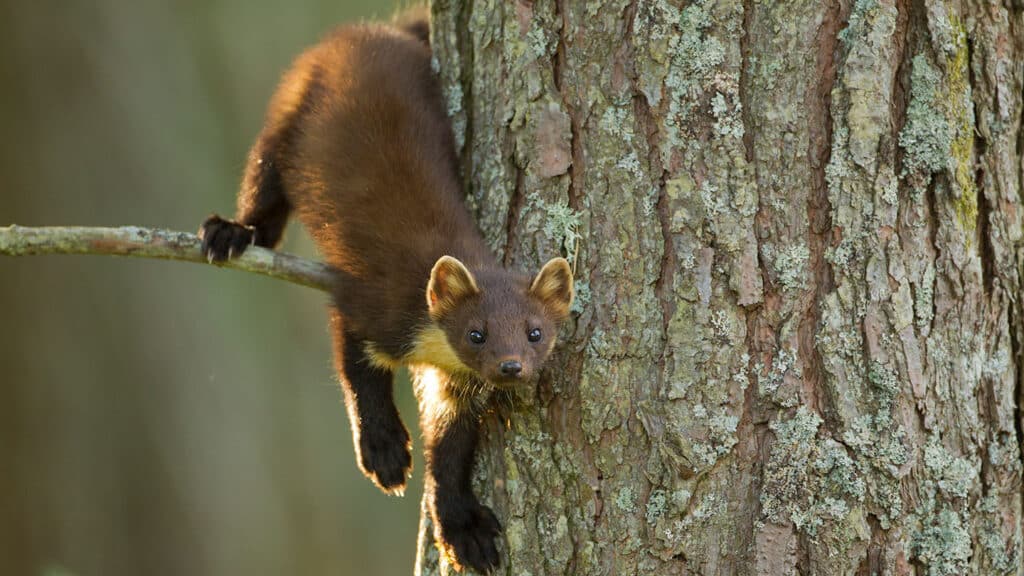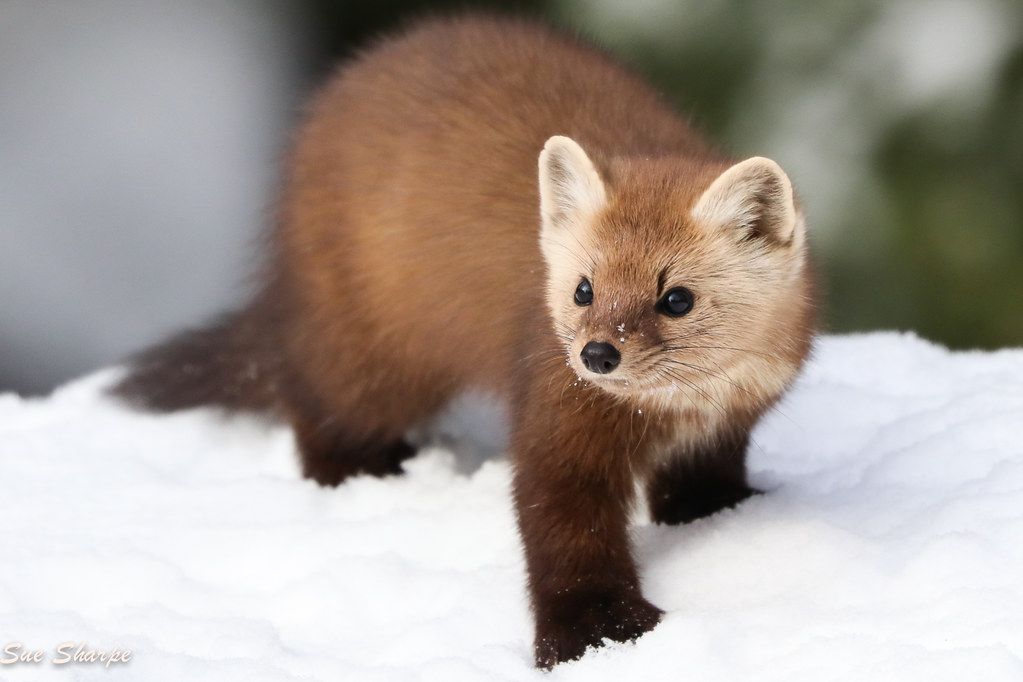The pine marten (Martes martes) is a captivating and elusive member of the mustelid family that calls the United Kingdom home. With its sleek body, bushy tail, and captivating eyes, the pine marten has intrigued naturalists and conservationists for centuries. In this article, we will delve into the fascinating world of pine martens from a UK perspective, exploring their history, habitat, behaviour, and the ongoing efforts to protect and conserve these enigmatic creatures.
Historical Perspective
Pine martens have a storied history in the United Kingdom, dating back to prehistoric times. Once widespread throughout the British Isles, they faced significant population declines due to deforestation, habitat loss, and hunting. By the late 19th century, pine martens had become a rare sight in the UK, confined mainly to the Scottish Highlands and a few remote pockets in England and Wales.
The decline of the pine marten population was accelerated by hunting and trapping for their fur, which was highly sought after. Their pelts, prized for their softness and rich, dark brown colour, were used in clothing and accessories. This relentless pursuit pushed the species to the brink of extinction in the UK.

Distribution and Habitat
Pine martens are arboreal creatures that thrive in woodland habitats, particularly in coniferous and mixed woodlands. These elusive carnivores prefer dense, mature forests with plenty of tree cover, which provides them with both shelter and an abundant supply of food. In the UK, pine martens primarily inhabit the northwestern regions of Scotland, including the Scottish Highlands, where large expanses of rugged, remote terrain offer ideal conditions for their survival.
In recent years, there have been exciting developments in the distribution of pine martens in the UK. Conservation efforts, including habitat restoration and reintroduction programs, have started to pay off. Pine martens have been gradually expanding their range southward, making occasional appearances in parts of northern England and Wales. This resurgence is a testament to the dedication of conservationists and the gradual recovery of suitable habitats.
Behaviour and Diet
Pine martens are primarily nocturnal, which means they are most active during the night. This nocturnal behaviour allows them to avoid human encounters and predation by larger animals, such as eagles and foxes. They are solitary animals, except during the mating season, when males and females come together.
Their diet is varied and adaptable. Pine martens are omnivorous, feeding on a wide range of prey and plant matter. Their diet typically includes small mammals like voles and squirrels, birds, eggs, insects, fruits, and even fungi. This adaptability in diet is one of the reasons pine martens have been able to survive in diverse habitats, from dense forests to more open landscapes.

Reproduction and Life Cycle
Pine martens have a distinctive reproductive pattern. Mating typically occurs in July or August, but implantation of the fertilised egg is delayed until the following spring. This phenomenon, known as delayed implantation, ensures that the young are born during the optimal time of year when food is more abundant.
Females give birth to a litter of two to four kits, which are blind and completely dependent on their mother for the first few weeks of their lives. As the kits grow, they become more independent and begin to explore their surroundings. By the time they reach four to six months of age, they are weaned and start hunting alongside their mother. Young pine martens may stay with their mother for up to a year before becoming fully independent.
Conservation Efforts
Conservation efforts to protect and restore pine marten populations in the UK have been underway for several decades, gaining significant momentum in recent years. These efforts include habitat restoration, reintroduction programs, and legal protection.
- Habitat Restoration: Recognising the importance of suitable habitat for pine martens, conservationists have worked to restore and protect woodlands across the UK. This includes efforts to promote sustainable forestry practices and create wildlife corridors that allow pine martens to move between fragmented habitats.
- Reintroduction Programs: Reintroducing pine martens to areas where they have been locally extinct has been a key strategy in their conservation. The most notable example of this is the reintroduction program in Wales, where pine martens were released in forests to help establish a viable population.
- Legal Protection: Pine martens are now legally protected in the UK, making it illegal to harm or kill them. These legal protections are crucial for their continued recovery and survival.
Success Stories
One of the most promising success stories in pine marten conservation in the UK comes from Scotland. Here, the species has made a remarkable recovery in certain areas, thanks to a combination of factors, including reduced hunting pressure and the natural regeneration of forests.
The Galloway Forest Park in southwest Scotland has become a stronghold for pine martens. In this expansive wilderness area, the population has rebounded, offering a glimpse of what effective conservation measures can achieve. Researchers have documented the spread of pine martens into new territories, indicating their resilience and adaptability.

Challenges and Threats
While there have been positive developments in the conservation of pine martens in the UK, several challenges and threats still loom.
- Road Mortality: Pine martens, like many other wildlife species, face the danger of road mortality as they attempt to cross highways and roads. This is a significant concern, especially as they expand their range into more populated areas.
- Habitat Fragmentation: Continued habitat fragmentation due to urban development and infrastructure expansion poses a threat to pine marten populations. Isolated populations are at risk of genetic bottlenecking and reduced genetic diversity.
- Invasive Species: Invasive species, such as the grey squirrel, can outcompete native red squirrels and disrupt the pine marten’s food chain. This competition for resources can negatively impact pine marten populations.
- Disease: Like all wildlife, pine martens are susceptible to diseases. Emerging diseases or outbreaks can have devastating effects on already vulnerable populations.
Future Prospects
The future of pine martens in the UK is brighter than it has been in centuries, thanks to concerted conservation efforts. As populations continue to expand and recover, pine martens may become a more familiar sight in certain parts of the country.
However, continued vigilance and conservation efforts are essential to ensure the long-term survival of pine martens. This includes ongoing habitat restoration, monitoring of populations, and research to better understand their behaviour and ecology.
Additionally, public awareness and education play a crucial role in pine marten conservation. When people understand the importance of these elusive creatures and their role in maintaining healthy ecosystems, they are more likely to support conservation efforts and take measures to minimise human impacts on pine marten populations.
Conclusion
The story of pine martens in the United Kingdom is a tale of resilience, recovery, and ongoing conservation efforts. From the brink of extinction, these enigmatic creatures are gradually reclaiming their place in the British Isles, expanding their range, and captivating the hearts of those lucky enough to catch a glimpse of them in the wild. As we work to protect and conserve the pine marten, we also preserve a piece of the UK’s natural heritage and contribute to the biodiversity of its landscapes.
Sam loves to learn about animals and their habitats. He has been a nature lover from a very young age, and has been writing papers and articles about wildlife for as long as he can remember.
